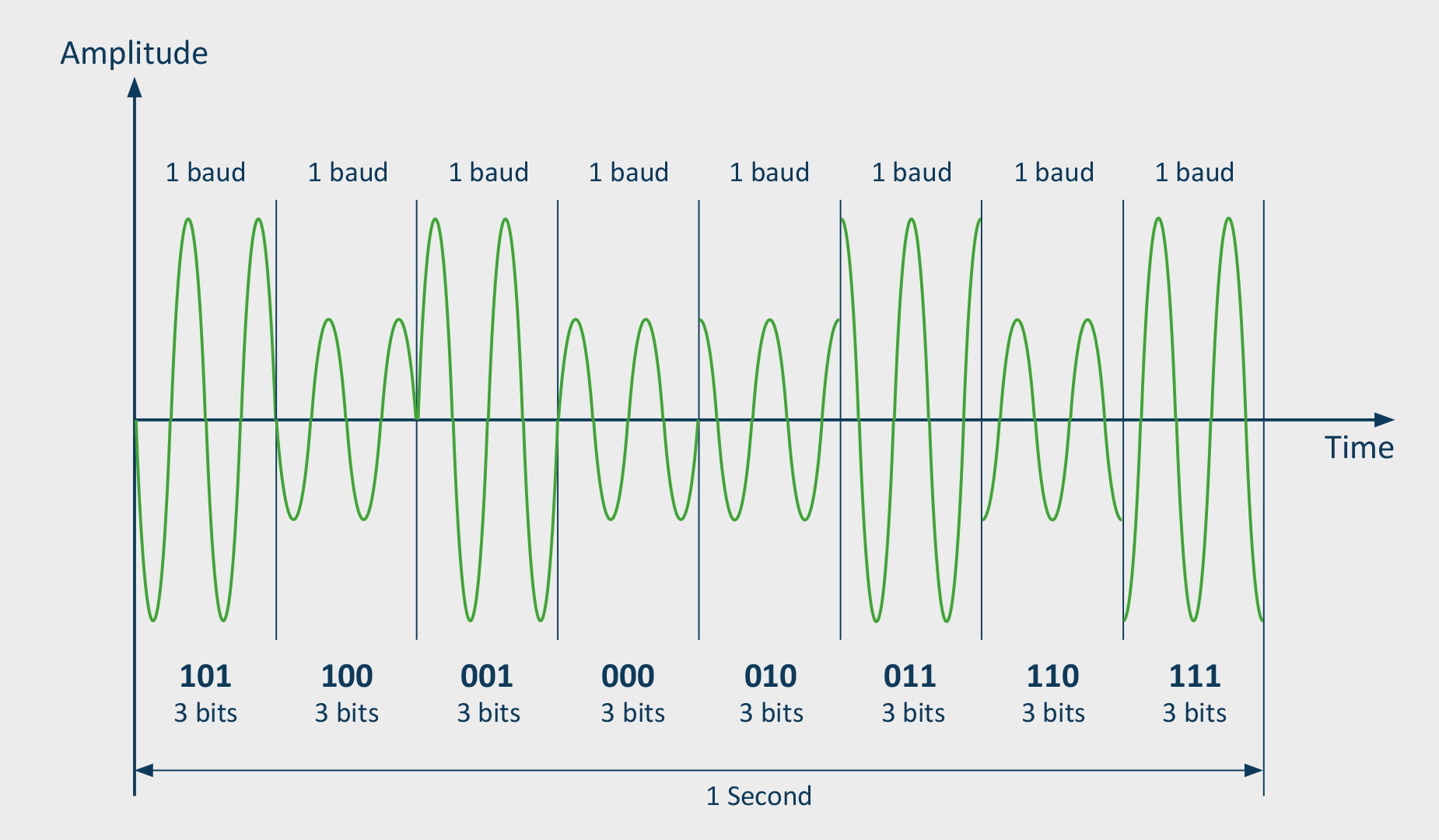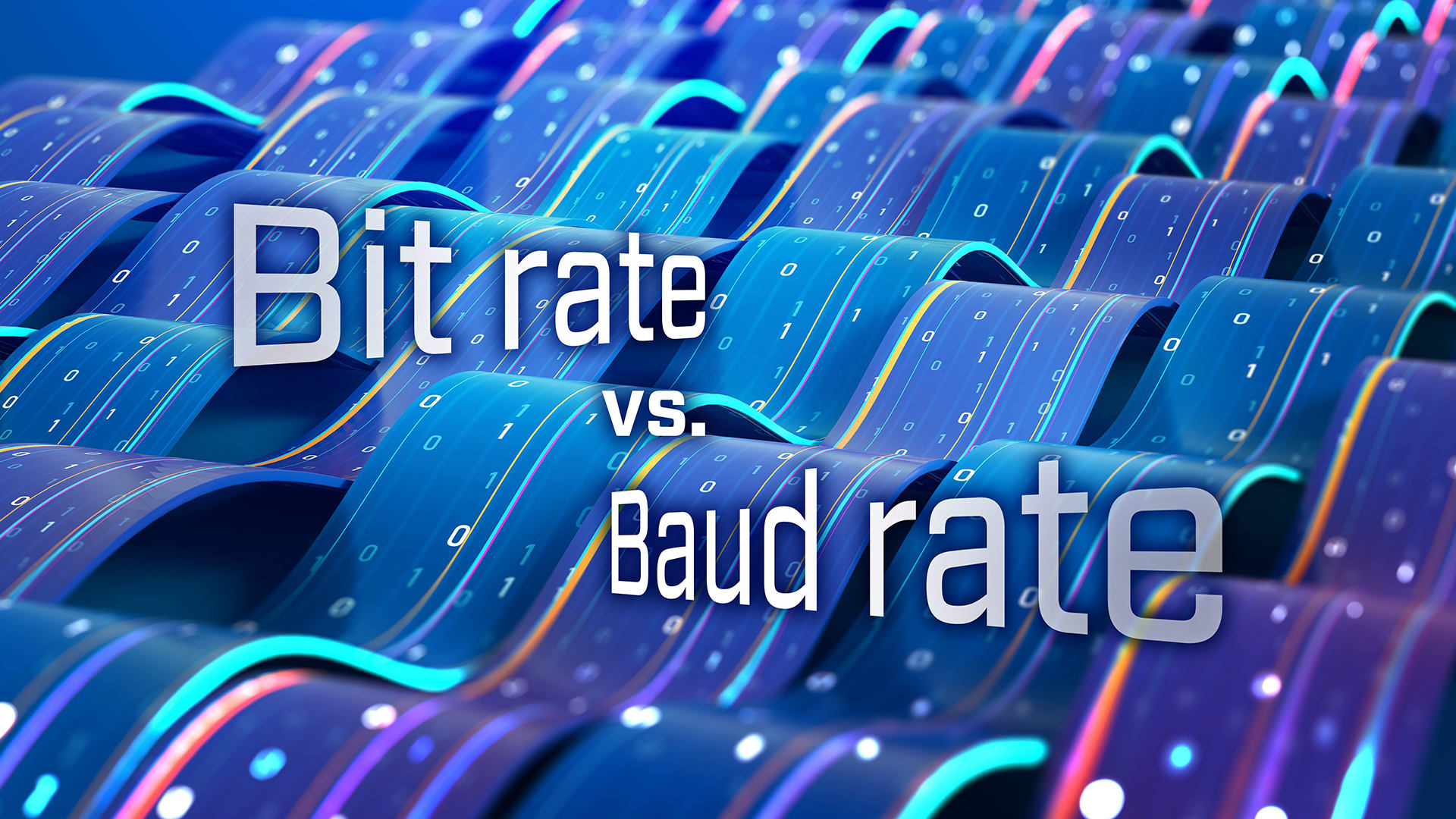In the world of data communication, the terms ‘bit rate’ and ‘baud rate’ are very important, but they are often misunderstood or incorrectly considered to be interchangeable. However, for engineers and technicians working in this field, it is important to understand the differences between these two metrics to be able to use the terms properly.
So what exactly do bit rate and baud rate mean?
- Bit rate: Bit rate is a measure of the data transmission speed and is expressed in bits per second (bps). It specifies how many bits of data are transmitted via a medium in one second. The bit rate is directly proportional to the amount of information transmitted.
- Baud rate: Baud rate, on the other hand, refers to the number of signal events or symbol changes per second. A symbol can carry more than one bit of information. The baud rate is measured in bauds (Bd).
The key difference between bit rate and baud rate lies in the way in which information is transmitted. While the bit rate quantifies the amount of data transmitted, the baud rate refers to the number of state changes of the transmission medium.
With serial digital data transmission, for example for CAN (Controller Area Network) and other fieldbus systems, only one bit is transmitted per symbol change (1/0). The bit rate therefore corresponds to the baud rate on these systems.
Differences between the bit rate and baud rate due to the use of data modulation methods
Modulation methods are key technologies in data communication and telecommunication for sending information via transmission media, such as cables, air, or fiber optics. They make it possible to change a base signal (carrier signal) so that it can transmit data. There are different types of modulation, each with its own characteristics and application areas.
The relationship between bit rate and baud rate is influenced by the modulation method used. With simple modulation, such as binary phase-shift keying (BPSK), one baud corresponds to one bit. The bit rate and baud rate are the same here. But with more complex modulation methods, such as quadrature amplitude modulation (QAM), several bits can be coded in one symbol. For example, 16 QAM transmits four bits per symbol so that the bit rate is four times the baud rate.

Image: With 8 QUAM, for example, eight different values, i.e., three bits, can be transmitted by using two amplitudes and four phase shifts per step. In this example, the baud rate is therefore eight, with a bit rate of 24.
Practical examples
- Traditional modems: A 56K modem, which was used in older telephone networks, used complex modulation techniques to achieve a higher bit rate over a limited baud rate.
- Modern wireless communication: 4G LTE systems use higher orders of QAM to transmit more data over the same spectrum, whereby the bit rate is much higher than the baud rate.
In conclusion, it is evident that bit rate and baud rate are two important variables in the world of data communication. They may sound complicated, but at their core they help us to understand how fast data is being transmitted and how efficiently our systems are working. For everyone who works in data communication, it is essential to understand these concepts to optimize networks and improve data transmission.

